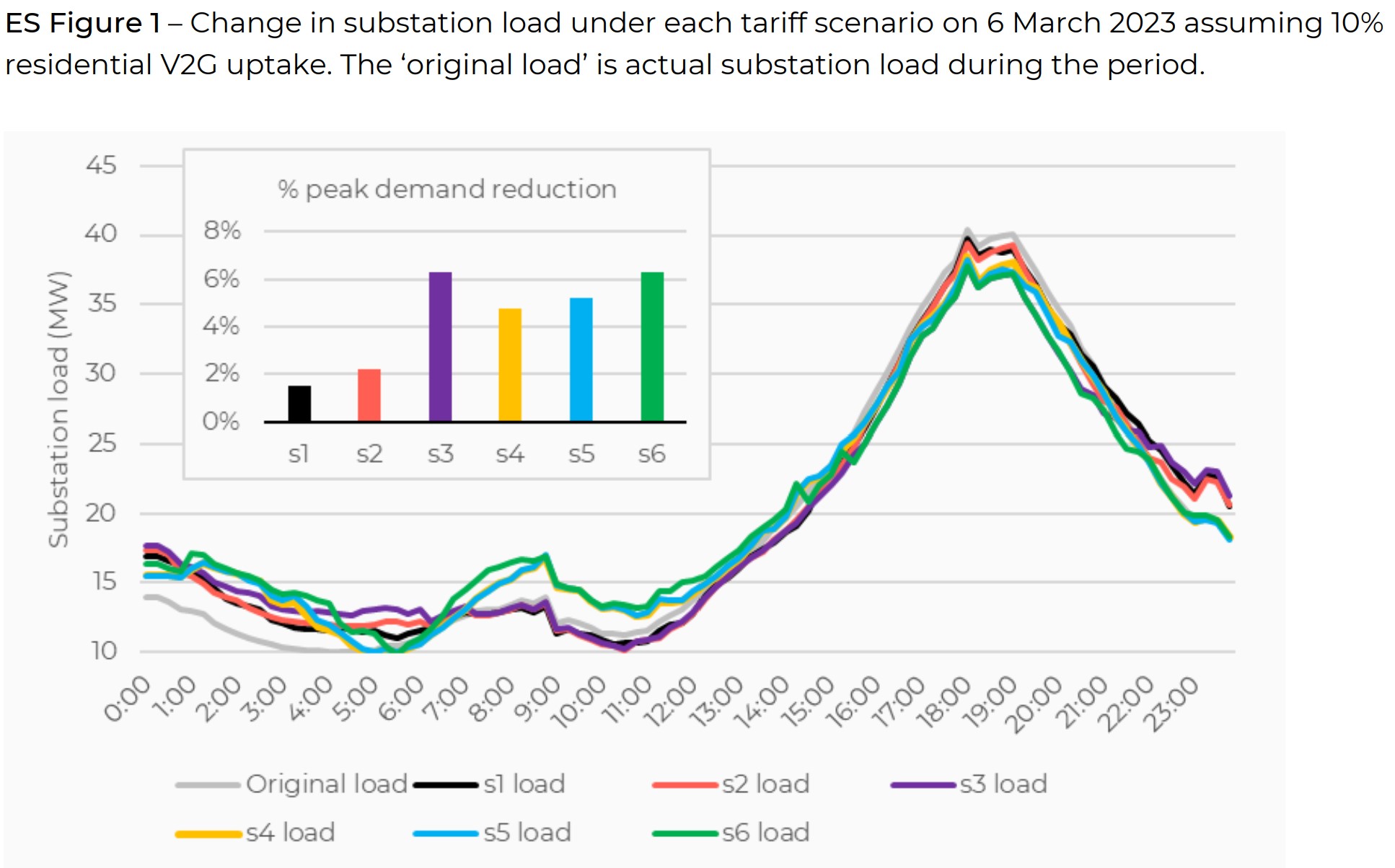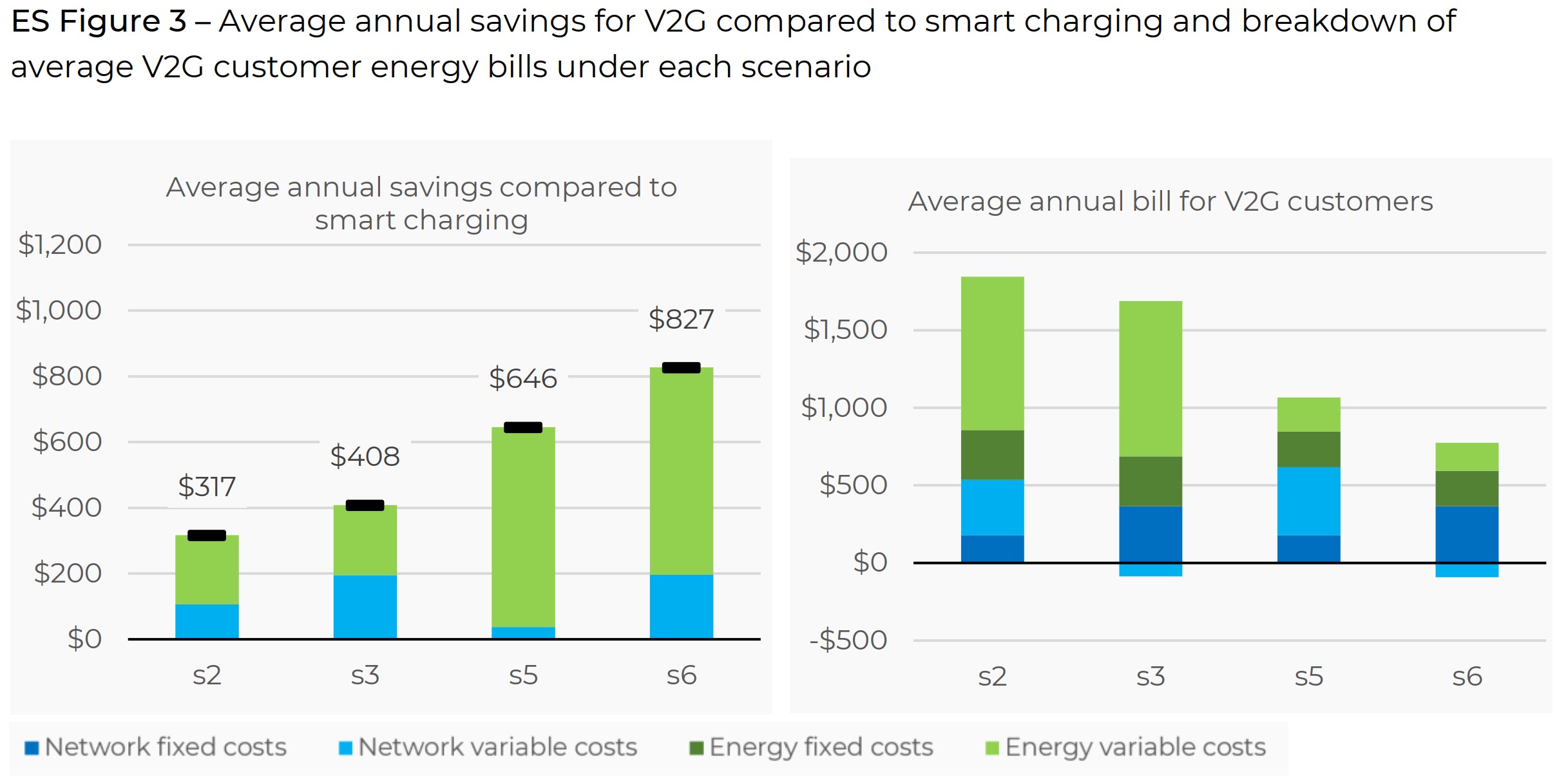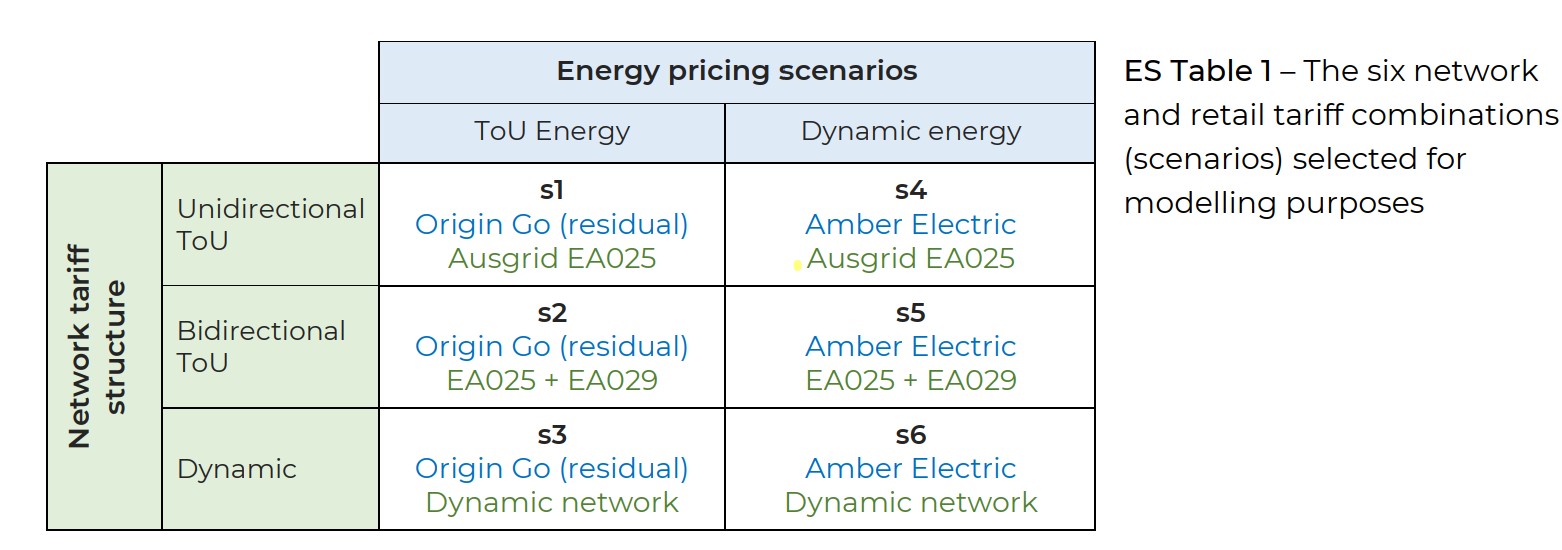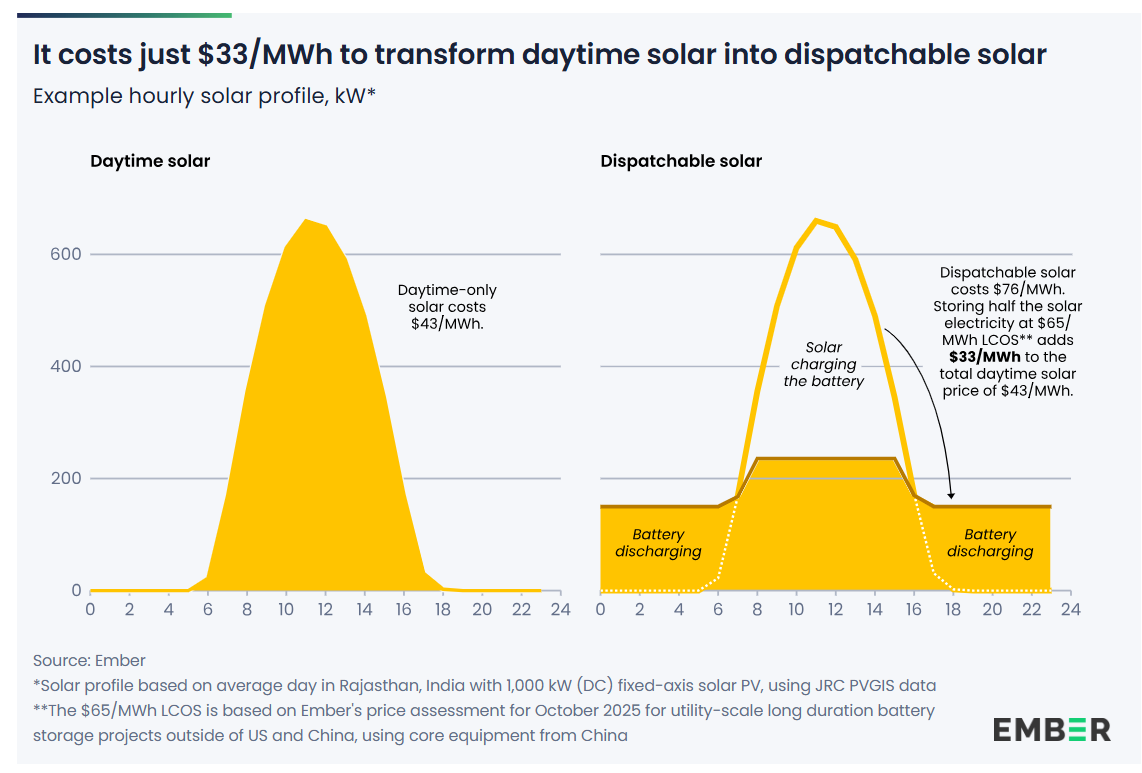Research from Australia suggests that employing electric vehicle-to-grid (V2G) connections at a 10% penetration rate can reduce peak demand charges for local substations by 6% and substantially lower fueling costs for electric vehicle (EV) owners. However, without proper management, EV penetration levels above 20% could negate those benefits.
The study, ‘Network tariffs for V2G,’ conducted by enX and commissioned by the Australian Renewable Energy Agency, aimed to explore the interaction between dynamic electricity and network tariffs (which are real-time, similar to wholesale pricing tools) and the increasing number of EVs connecting to the grid. The study also sought to understand how these EVs could help alleviate grid pressure in comparison to fixed time-of-use tariffs.

Findings indicate that V2G connections under dynamic pricing, specifically tariff types s3 & s6 in the chart above, led to the greatest substation peak demand shaving. These same dynamic pricing tariffs also saved significant amounts on EV owners’ electricity bills, with some V2G participants earning a net positive revenue on their vehicles’ electricity use, including one small account that covered 100% of their overall electricity use.
The analysis examined the load at the Metford substation in New South Wales, Australia, specifically focusing on one of the highest peak demand days of the year, March 6, 2023. On this day, the maximum peak demand reached 41.6 MW at 6pm. Under a dynamic pricing electricity and network tariff focused on peak shedding, the substation experienced a reduction of 2.54 MW in peak load. This reduction accounted for 6.29% of the substation’s peak demand value.
The analysis also found that an early morning peak is developing and expected to reach a high-stress point as V2G EVs hit a 20% uptake rate.

The dynamic pricing model achieved the most significant reduction in peak demand when applied to both network charges (including transmission, distribution, and demand-type charges) and electricity pricing. This model priced electricity based on current market rates, contrasting with time-of-use pricing that relies on fixed periods of higher and lower rates.
The analysis also revealed that a combination of bidirectional network support tariff and spot passthrough pricing (scenario s5) resulted in a reduction of 2.11 MW, nearly matching the 2.54 MW in savings from the optimal model. Models s3, s5, and s6 all generated significant savings for their car owners, as well as significant peak shaving for the substation.

In total, the analysis modeled 520 unique user accounts, including customers with solar power installations of varying sizes and diverse patterns of electricity usage. The study was motivated by projections for the year 2050, which predict a significant increase in EV battery capacity. According to the document, EV battery capacity is expected to reach approximately 2.4 TWh, four times the estimated power grid storage capacity of 0.64 TWh. The researchers emphasize that unlocking the potential of these batteries will be crucial for optimizing the power grids of the future.
This content is protected by copyright and may not be reused. If you want to cooperate with us and would like to reuse some of our content, please contact: editors@pv-magazine.com.








By submitting this form you agree to pv magazine using your data for the purposes of publishing your comment.
Your personal data will only be disclosed or otherwise transmitted to third parties for the purposes of spam filtering or if this is necessary for technical maintenance of the website. Any other transfer to third parties will not take place unless this is justified on the basis of applicable data protection regulations or if pv magazine is legally obliged to do so.
You may revoke this consent at any time with effect for the future, in which case your personal data will be deleted immediately. Otherwise, your data will be deleted if pv magazine has processed your request or the purpose of data storage is fulfilled.
Further information on data privacy can be found in our Data Protection Policy.